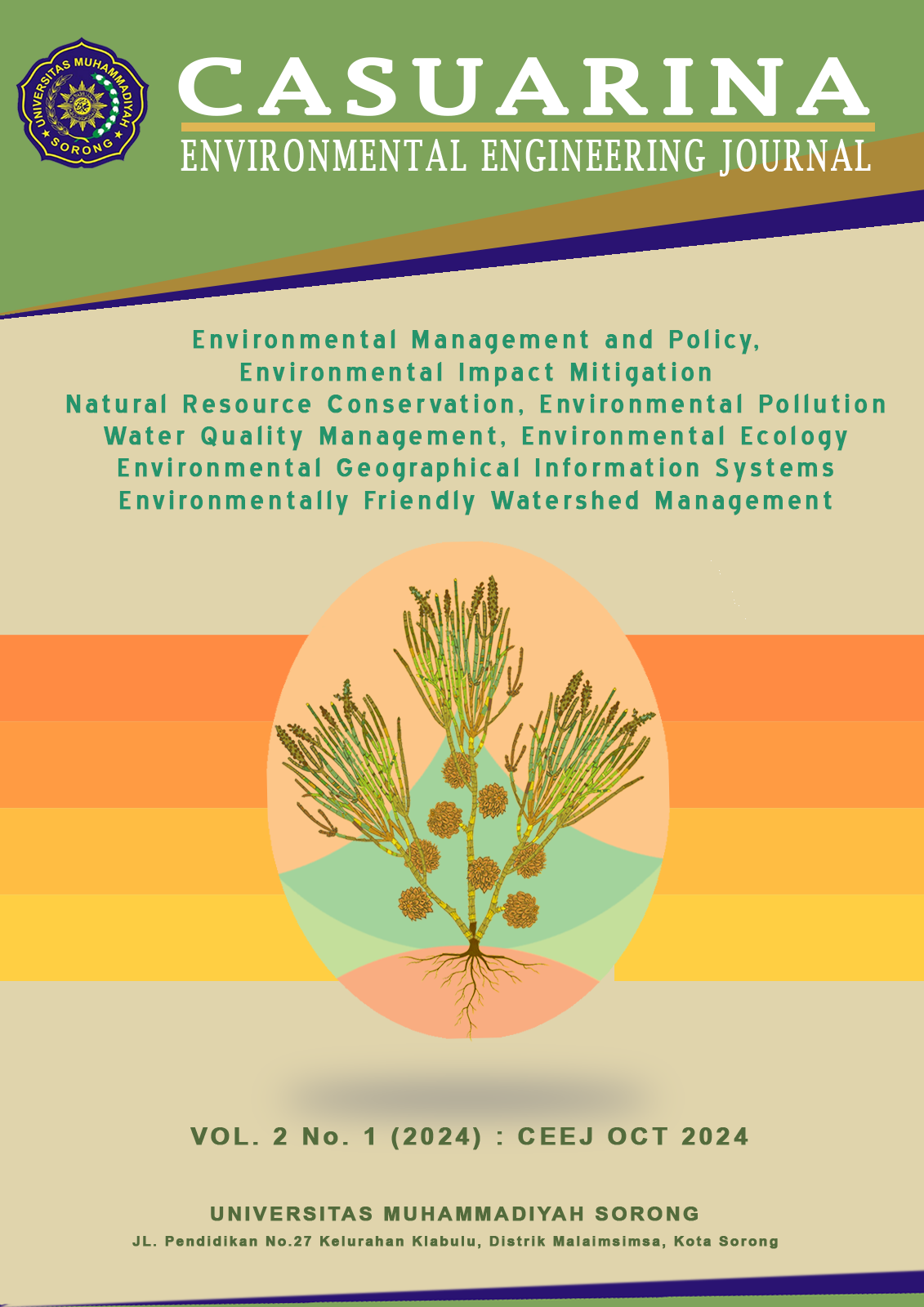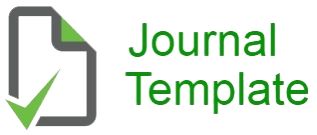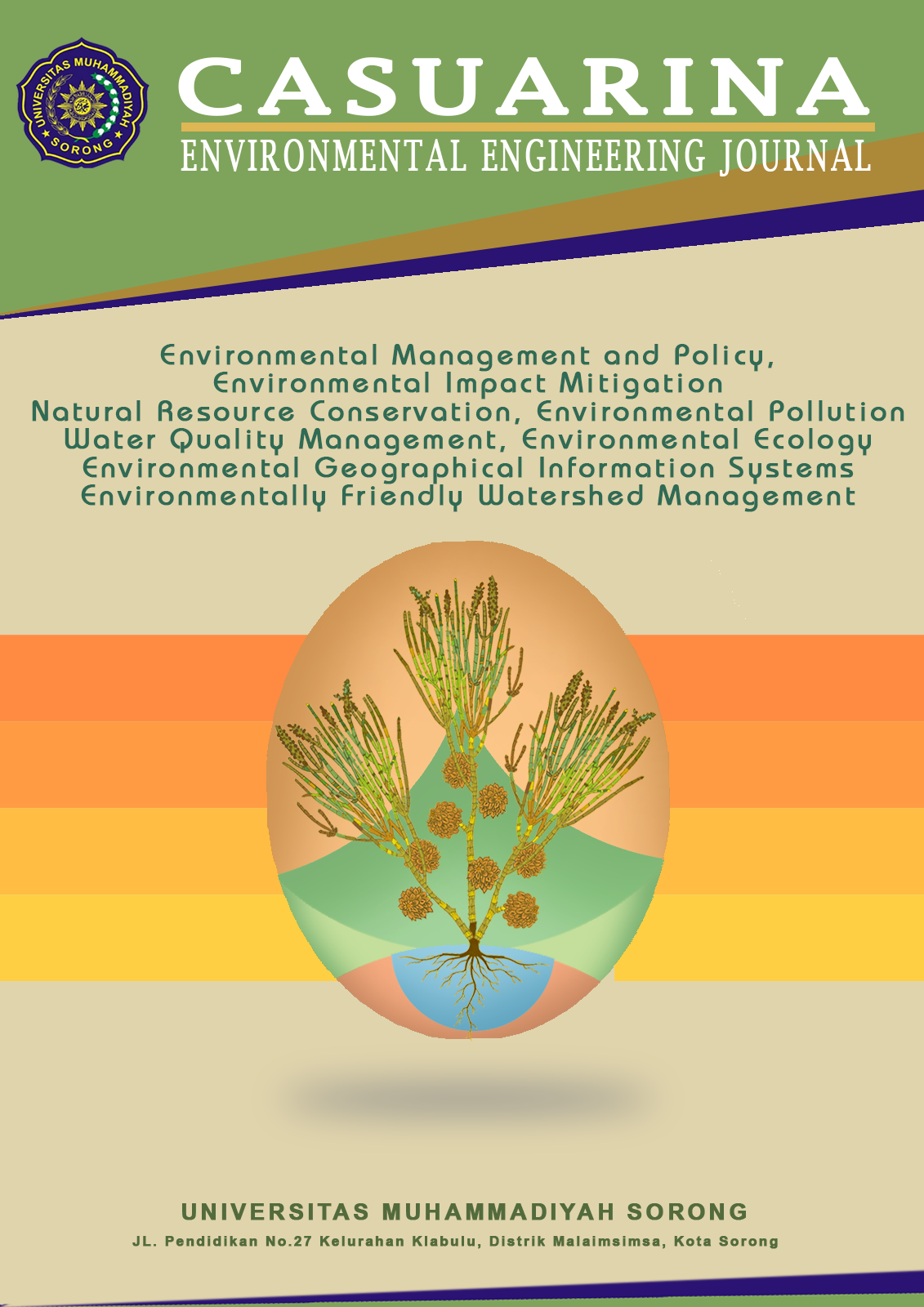Evaluation Of Management Hazardous and Toxic Waste (B3) PT. X Tobacco Cigarette Industry
DOI:
https://doi.org/10.33506/ceej.v2i1.3754Keywords:
Evaluation, Tobacco Cigarette Industry, Hazardous Toxic WasteAbstract
The aim of this research is to evaluate compliance with the applicable regulations. The research methods include data collection, both primary and secondary, field observations, and interviews with relevant parties, along with relevant literature as supporting material for this study. The findings of the research indicate that PT X has not yet implemented several hazardous waste (B3) management steps, including waste identification and sorting, temporary storage, as well as transportation and final waste processing. However, there are several challenges encountered, such as a lack of storage facilities meeting the standards, limitations in internal supervision, and a lack of employee awareness regarding the importance of proper hazardous waste management. This research recommends several improvements, such as upgrading storage facilities to meet standards, enhancing training and outreach programs for employees, and strengthening the supervision and monitoring system of hazardous waste management. The implementation of these recommendations is expected to improve the effectiveness of hazardous waste management at PT X and reduce negative impacts on the environment and the surrounding community's health.
References
Sulistiani SL. "Analisis Maqashid Syariah Dalam Pengembangan Hukum Industri Halal Di Indonesia". Law Justice. 2019;3(2):91–7.
Miftamala SD, Nirawati L. "Debt To Equity Ratio, Dividend Payout Ratio Dan Earning Per Share Berpengaruh Terhadap Nilai Perusahaan Pada Industri Rokok Yang Terdaftar Di Bursa Efek Indonesia". J Bisnis Indones. 2018;9(2).
Nursabrina A, Joko T, Septiani O. Kondisi Pengelolaan Limbah B3 Industri Di Indonesia Dan Potensi Dampaknya: Studi Literatur. J Ris Kesehat Poltekkes Depkes Bandung. 2021;13(1):80–90.
Maulana A, Pinasang D, Cecillia. Penegakan Hukum Lingkungan Pidana Terhadap Perusahaan Yang Melakukan Dumping Limbah Bahan Berbahaya Dan Beracun (Limbah B3). Lex Adm. 2022;VIII(5):25–33.
Wilujeng ISDP dan SA. Evaluasi Pengelolaan Limbah Bahan Berbahaya dan Beracun (B3) di PT. XYZ. 2023;12(2).
Rachmawati1 S, Sumiyaningsih E, Atmojo TB. Analisis Manajemen Pengelolaan Limbah Padat Medis B3 Di Rumah Sakit Universitas Sebelas Maret Surakarta. Pros SNST Fak Tek [Internet]. 2018;1(1):31–6. Available from: https://publikasiilmiah.unwahas.ac.id/index.php/PROSIDING_SNST_FT/article/view/2297
Downloads
Published
How to Cite
Issue
Section
License
Copyright (c) 2024 Casuarina: Environmental Engineering Journal

This work is licensed under a Creative Commons Attribution-NonCommercial-ShareAlike 4.0 International License.
Please find the rights and licenses in Casuarina: Environmental Engineering Journal. By submitting the article/manuscript of the article, the author(s) agree with this policy. No specific document sign-off is required.
1. License
The non-commercial use of the article will be governed by the Creative Commons Attribution license as currently displayed on Creative Commons Attribution-NonCommercial-ShareAlike 4.0 International License.
2. Author(s)' Warranties
The author warrants that the article is original, written by the stated author(s), has not been published before, contains no unlawful statements, does not infringe the rights of others, is subject to copyright that is vested exclusively in the author, and free of any third party rights, and that any necessary written permissions to quote from other sources have been obtained by the author(s).
3. User/Public Rights
Casuarina: Environmental Engineering Journal's spirit is to disseminate articles published are as free as possible. Under the Creative Commons license, Casuarina: Environmental Engineering Journal permits users to copy, distribute, display, and perform the work for non-commercial purposes only. Users will also need to attribute authors and Casuarina: Environmental Engineering Journal on distributing works in the journal and other media of publications. Unless otherwise stated, the authors are public entities as soon as their articles got published.
4. Rights of Authors
Authors retain all their rights to the published works, such as (but not limited to) the following rights;
- Copyright and other proprietary rights relating to the article, such as patent rights,
- The right to use the substance of the article in own future works, including lectures and books,
- The right to reproduce the article for own purposes,
- The right to self-archive the article (please read our deposit policy),
- The right to enter into separate, additional contractual arrangements for the non-exclusive distribution of the article's published version (e.g., post it to an institutional repository or publish it in a book), with an acknowledgment of its initial publication in this journal (Casuarina: Environmental Engineering Journal).
5. Co-Authorship
If the article was jointly prepared by more than one author, any authors submitting the manuscript warrants that he/she has been authorized by all co-authors to be agreed on this copyright and license notice (agreement) on their behalf, and agrees to inform his/her co-authors of the terms of this policy. Sentralisasi will not be held liable for anything that may arise due to the author(s) internal dispute. Sentralisasi will only communicate with the corresponding author.
6. Royalties
Being an open accessed journal and disseminating articles for free under the Creative Commons license term mentioned, author(s) aware that Casuarina: Environmental Engineering Journal entitles the author(s) to no royalties or other fees.
7. Miscellaneous
Casuarina: Environmental Engineering Journal will publish the article (or have it published) in the journal if the article editorial process is successfully completed. Casuarina: Environmental Engineering Journal's editors may modify the article to a style of punctuation, spelling, capitalization, referencing, and usage that deems appropriate. The author acknowledges that the article may be published so that it will be publicly accessible and such access will be free of charge for the readers as mentioned in point 3.








